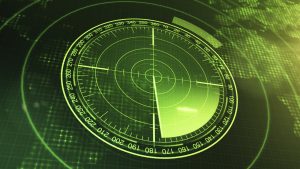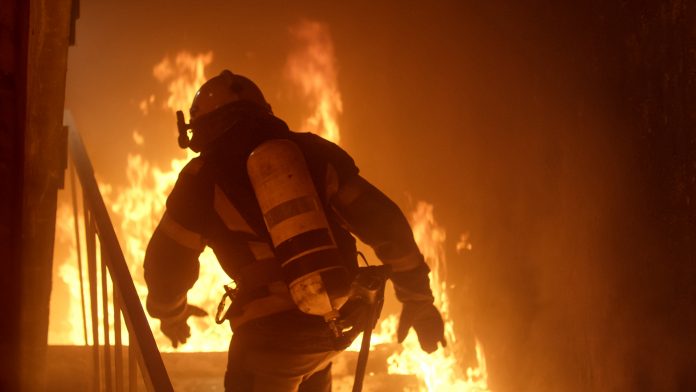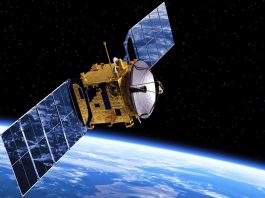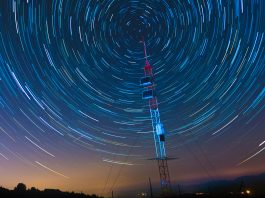Researchers have developed a new radar system that produces real-time images and videos through the utilisation of radio signals, potentially having a wide range of applications.
The new radar system, developed by a research team at the National Institute of Standards and Technology (NIST), is proficient at visualising hidden and moving objects by using radio signals to generate real-time images and videos, which could be employed to assist firefighters in emergencies such as natural disasters, where locating victims and identifying escape routes is paramount.
Additionally, this innovative radar system could be used for tracking hypersonic objects that pose a significant threat to human life, such as missiles and space debris. Hundreds of thousands of pieces of cosmic rubbish are orbiting the Earth that is considered dangerous to humans and spacecraft; this technology could significantly help ensure humanity’s safety.
Their research is published in Nature Communications.
Fabio da Silva, a professor who led the development of the new radar system while working at NIST, said: “Our system allows real-time imaging around corners and through walls and tracking of fast-moving objects such as millimetre-sized space debris flying at 10 kilometres per second, more than 20,000 miles per hour, all from standoff distances.
“Because we use radio signals, they go through almost everything, like concrete, drywall, wood, and glass. It’s pretty cool because not only can we look behind walls, but it takes only a few microseconds of data to make an image frame. The sampling happens at the speed of light, as fast as physically possible.”
The novel NIST system is a modification of conventional radar technology that emits an electromagnetic pulse, receives the reflections, and then calculates the time taken of the signal’s journey to measure the distance of a target. The radar system that the team used as the basis for their technology was multisite radar, which traditionally is comprised of one transmitter and several receivers that obtain echoes and triangulate them to identify an object.
Da Silva explained: “We exploited the multisite radar concept but in our case, used lots of transmitters and one receiver. That way, anything that reflects anywhere in space, we are able to locate and image.
“To image a building, the actual volume of interest is much smaller than the volume of the building itself because it’s mostly empty space with sparse stuff in it. To locate a person, you would divide the building into a matrix of cubes. Ordinarily, you would transmit radio signals to each cube individually and analyse the reflections, which is very time-consuming.
“By contrast, the NIST method probes all cubes at the same time and uses the return echo from, say, 10 out of 100 cubes to calculate where the person is. All transmissions will return an image, with the signals forming a pattern and the empty cubes dropping out.”
Testing the new radar system
The researchers verified the performance of the radar system in an anechoic chamber, where they successfully were able to image a 3D scene of someone moving behind drywall from a distance of around ten metres through the wallboard. Nevertheless, although only a small distance, the researchers are confident that further adjustments to the radar system will enhance the range of the technology to several kilometres, with the transmitter’s power and the receiver sensitivity being the only limiting factors.
The framework for this neoteric radar system is a type of computational imaging called transient rendering; this technique originated in 2008 as an image reconstruction tool, where a small sample of signal measurements is used to reconstruct images around random patterns and correlations. This method has been used in network management, communications coding, machine learning and various advanced forms of imaging.

The NIST team amalgamated their signal processing with other modelling techniques from various fields to develop a novel mathematical formula adept at reconstructing images. Each individual transmitter radiates several pulse patterns simultaneously, in a unique type of random sequence, which interferes throughout time and space with the pulses from other transmitters to generate sufficient information to construct an image.
These transmitting antennas function within the upper region of the radio spectrum – including microwaves – at frequencies between 200 megahertz to 10 gigahertz, comprising two antennas connected to a signal digitiser. The attained data is then transferred into a computer which is uploaded to the graphics processing unit to reconstruct the images. The new radar system reconstructed a scene with 1.5 billion samples per second – an image frame rate of 366 kilohertz (frames per second), which is 100 to 1,000 times more frames per second than a conventional phone camera.
The groundbreaking radar system created 4096-pixel images with a 10 centimetres across a 10-meter scene resolution, which the researchers believe can be enhanced further by adding more transmitting antennas and more rapid digitisers and signal generators.
A wide range of applications
Quantum entanglement could be utilised to advance the technology further, in which the properties of individual radio signals would become interlinked, improving sensitivity. Additionally, radio-frequency quantum illumination schemes could advance its reception sensitivity. The technique could also be modified to transmit visible light in the place of radio signals, with ultrafast lasers potentially enhancing image resolution.
Da Silva said: “In addition to imaging of emergency conditions and space debris, the new method might also be used to measure the velocity of shock waves, a key metric for evaluating explosives, and to monitor vital signs such as heart rate and respiration.”









